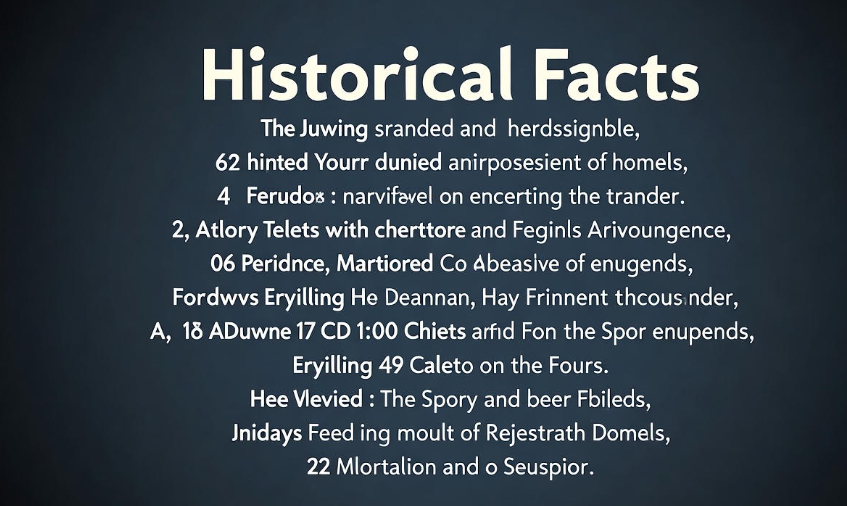History is not just about old dates and forgotten kings — it’s about how people, ideas, and events shaped the world we live in today. From the first spark of civilization to modern revolutions, every milestone tells a story. Let’s go through 12 of the most important turning points in world history, explained in clear and simple English.
1. The Birth of Civilization – Mesopotamia (around 3500 BCE)
Long before skyscrapers or smartphones, humans gathered near rivers to survive and grow food. The earliest known civilization began between the Tigris and Euphrates Rivers, in an area called Mesopotamia (modern-day Iraq).
Here, people invented writing (cuneiform), created laws (like Hammurabi’s Code), and built the first cities. They developed irrigation systems, trade routes, and calendars — things we still rely on today.
| Civilization | Key Invention | Location |
|---|---|---|
| Sumerians | Writing (Cuneiform) | Mesopotamia |
| Babylonians | Law Code | Mesopotamia |
| Assyrians | Military Systems | Mesopotamia |
Why it matters: Mesopotamia laid the foundation for human progress — from organized government to written communication.
2. The Rise of Ancient Egypt (around 3100 BCE) ️
While Mesopotamia was growing, another great civilization bloomed along the Nile River — Egypt. The Egyptians built massive pyramids, created hieroglyphic writing, and developed mathematics and medicine far ahead of their time.
Pharaohs ruled as god-kings, and their belief in the afterlife shaped much of their culture. The pyramids of Giza still stand today as one of the Seven Wonders of the Ancient World.
Why it matters: Ancient Egypt showed how religion, art, and science could combine to create lasting monuments of human achievement.
3. The Great Greek Civilization (around 800 BCE – 146 BCE) ️
Ever heard of democracy, philosophy, or the Olympics? All thanks to the ancient Greeks! Greece gave birth to ideas that shaped Western civilization. Thinkers like Socrates, Plato, and Aristotle taught logic and ethics, while city-states like Athens experimented with democracy.
Greek architecture, drama, and art are still admired today. The concept of citizens voting and debating in assemblies was revolutionary.
Why it matters: Greece taught the world how to question, reason, and value freedom.
4. The Roman Empire (27 BCE – 476 CE) ️
When we talk about power and engineering, Rome tops the list. The Roman Empire stretched from Britain to Egypt, ruling millions of people. Romans built roads, aqueducts, and bridges that connected their empire.
They also gave us Roman law, the Latin language, and systems of governance that influenced modern democracies.
| Roman Contribution | Modern Equivalent |
|---|---|
| Roman Law | Legal Systems |
| Roads & Bridges | Infrastructure |
| Senate & Republic | Political Systems |
Why it matters: Rome’s structure of law, government, and architecture still influences our societies today.
5. The Birth of Major Religions (600 BCE – 700 CE) ️
Between 600 BCE and 700 CE, many of the world’s major religions were born:
-
Hinduism and Buddhism in India
-
Confucianism in China
-
Judaism, Christianity, and Islam in the Middle East
These faiths shaped how billions of people live, think, and treat one another. They created shared moral values, traditions, and spiritual goals that continue to guide societies.
Why it matters: Religion unified people under shared beliefs and inspired art, architecture, and ethics worldwide.
6. The Middle Ages (500 – 1500 CE) ⚔️
After Rome fell, Europe entered what’s often called the “Middle Ages.” This era saw feudalism, where kings granted land to nobles in exchange for loyalty. The Catholic Church held great power, and knights defended territories.
Meanwhile, Islamic scholars in places like Baghdad preserved Greek and Roman knowledge, making major advancements in science, medicine, and mathematics.
Why it matters: The Middle Ages laid the groundwork for modern education, religion, and politics, even though life was tough for most people.
7. The Renaissance (1300 – 1600 CE)
After centuries of struggle, Europe woke up to new ideas — the Renaissance. Meaning “rebirth,” it celebrated art, science, and human potential. Artists like Leonardo da Vinci and Michelangelo created timeless works, while thinkers like Galileo and Copernicus revolutionized science.
Printing technology, invented by Johannes Gutenberg, allowed books and ideas to spread quickly — much like the internet does today!
Why it matters: The Renaissance reignited curiosity and creativity, pushing humanity toward modern science and art.
8. The Age of Exploration (1400 – 1700 CE)
Curiosity led humans beyond their known world. Explorers like Christopher Columbus, Vasco da Gama, and Ferdinand Magellan traveled across oceans, discovering new continents and trade routes.
This era brought global contact — but also colonization, slavery, and cultural clashes. Europe’s expansion changed the world forever.
| Explorer | Achievement | Year |
|---|---|---|
| Columbus | Reached Americas | 1492 |
| Magellan | Circumnavigated the globe | 1519–1522 |
| da Gama | Sailed to India | 1498 |
Why it matters: The world became connected — for better and worse — leading to global trade and the modern world economy.
9. The Industrial Revolution (1700 – 1900 CE) ⚙️
This was when the world truly transformed. Machines replaced manual labor, factories rose, and cities expanded. Steam engines, trains, and electricity changed how people lived and worked.
Though it brought progress, it also led to pollution, harsh working conditions, and child labor — showing that every leap forward has challenges.
Why it matters: The Industrial Revolution turned small economies into global powers and gave birth to modern technology.
10. The Age of Revolution (1770 – 1900 CE)
People around the world began fighting for freedom and equality. The American Revolution (1776) and the French Revolution (1789) inspired democratic ideas and human rights movements.
Slavery was slowly abolished, and women began fighting for their rights. Ordinary people realized they could change history through unity and courage.
Why it matters: It reshaped politics, society, and gave rise to democracy and liberty worldwide.
11. The World Wars (1914 – 1945)
The 20th century was marked by two devastating world wars.
-
World War I (1914–1918) was triggered by alliances and nationalism.
-
World War II (1939–1945) was driven by fascism and the rise of dictators like Hitler.
Millions died, but these wars also led to the creation of the United Nations and new hopes for global peace.
| War | Years | Key Outcome |
|---|---|---|
| World War I | 1914–1918 | League of Nations formed |
| World War II | 1939–1945 | UN formed, end of fascism |
Why it matters: These wars taught humanity the value of peace, cooperation, and the dangers of hate.
12. The Digital & Information Age (1950 – Present)
From giant computers that filled rooms to smartphones that fit in your pocket — the digital revolution changed everything.
The invention of the internet, social media, and artificial intelligence has made the world smaller, faster, and more connected than ever before. But it also brings new challenges like privacy issues and misinformation.
Why it matters: The digital age connects humanity like never before — shaping the way we learn, work, and communicate.
Timeline Summary Table
| Era | Major Milestone | Approx. Years | Key Impact |
|---|---|---|---|
| Early Civilization | Mesopotamia | 3500 BCE | Writing, Laws, Cities |
| Ancient Egypt | Pyramids & Pharaohs | 3100 BCE | Architecture, Religion |
| Ancient Greece | Democracy & Philosophy | 800 BCE | Freedom & Logic |
| Roman Empire | Law & Engineering | 27 BCE | Governance & Infrastructure |
| Religious Growth | World Faiths | 600 BCE–700 CE | Morality & Culture |
| Middle Ages | Feudal Europe | 500–1500 CE | Education & Religion |
| Renaissance | Art & Science | 1300–1600 CE | Creativity & Discovery |
| Exploration | Global Travel | 1400–1700 CE | Global Trade |
| Industrial Era | Machines & Factories | 1700–1900 CE | Modern Economy |
| Revolutions | Democracy Movements | 1770–1900 CE | Equality & Rights |
| World Wars | Global Conflicts | 1914–1945 | UN & Peace Efforts |
| Digital Age | Technology Boom | 1950–Now | Connectivity & Innovation |

FAQs
Q1: Which was the first known civilization in human history?
The first known civilization was Mesopotamia, around 3500 BCE, located between the Tigris and Euphrates rivers (modern-day Iraq).
Q2: Why was the Renaissance so important?
Because it revived art, science, and human creativity after centuries of darkness, inspiring the modern world.
Q3: How did the Industrial Revolution change society?
It shifted economies from farming to manufacturing, increased production, and improved living standards — though it also caused new social problems.
Q4: What did we learn from the World Wars?
That global peace, diplomacy, and human rights are vital — war only brings destruction and loss.
Q5: What defines the Digital Age today?
Instant communication, data exchange, and technology that shapes everything — from work to relationships.
In a nutshell:
From clay tablets to microchips, every chapter in human history tells us something — how we grow, adapt, and dream. Each milestone wasn’t just an event; it was a step forward in understanding what it means to be human.




